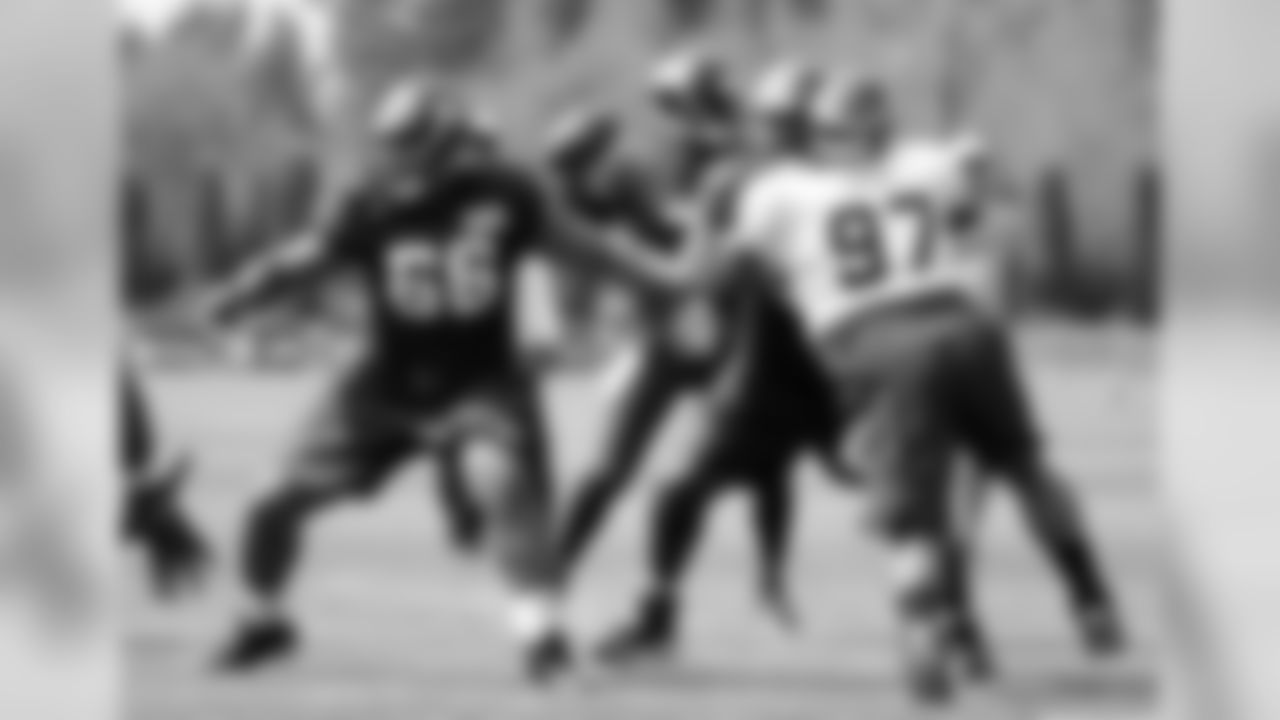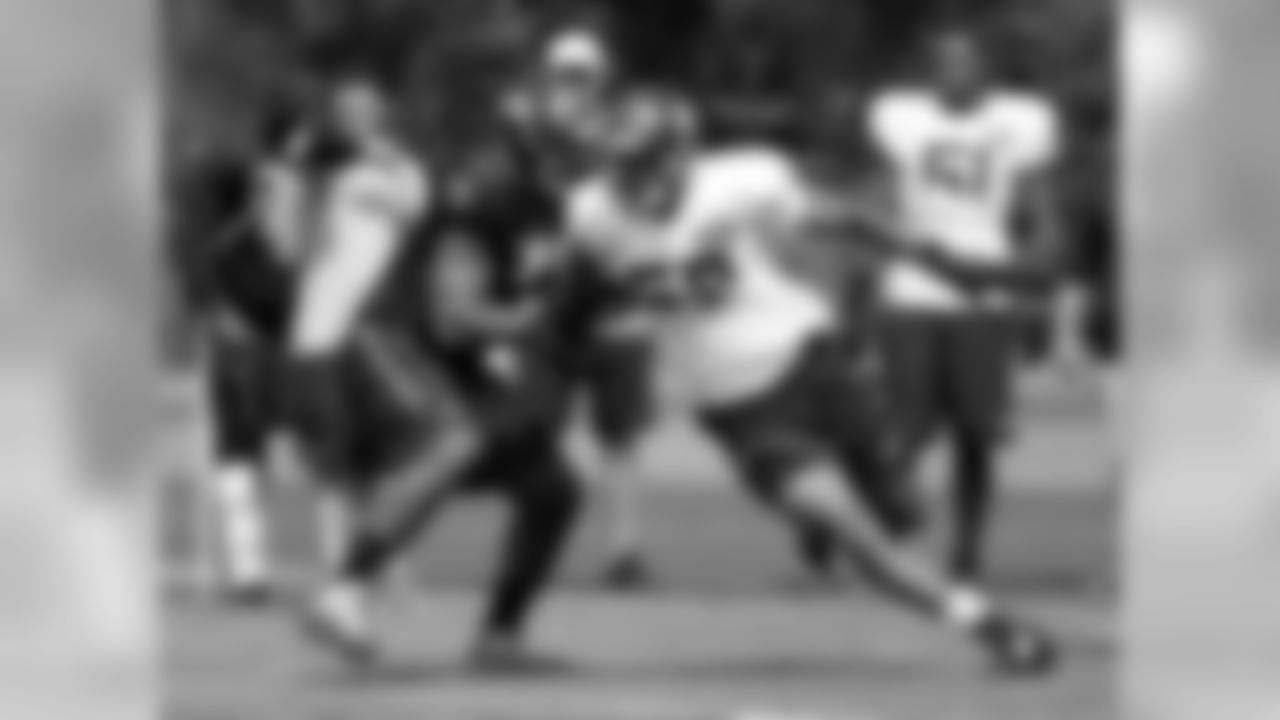Pete Carroll could have been talking about so many things in his football career when he noted with a grin, "conventional wisdom and me don't get along very well."
That's such an all-encompassing description of Carroll, it would be a solid choice for a title should he ever decide to write another book, but in this case, that very appropriate self-assessment was used when it came to the topic of building and maintaining a roster in the NFL.
In signing quarterback Russell Wilson and linebacker Bobby Wagner to contract extensions on consecutive days, the Seahawks didn't just retain two players, they continued a trend of locking up their most important players before they can ever hit free agency.
The Seahawks, like every team, have lost important players either in free agency or because of tough salary-cap related business decisions, but over the past two and a half years, they have re-signed strong safety Kam Chancellor, free safety Earl Thomas, cornerback Richard Sherman, receiver Doug Baldwin, linebacker K.J. Wright and now Wilson and Wagner before they got to the end of their rookie deals. The Seahawks have also been able to re-sign key veterans like Marshawn Lynch, Brandon Mebane, Michael Bennett, and Cliff Avril while also adding one of the league's best tight ends, Jimmy Graham, in the offseason.
"We have said that we want to keep this core of players together, we've recognized the value and the importance that they have to us for some time," Carroll said. "So as the stages have offered the opportunities for these guys to be signed, we've been able to get it done. With that comes difficult decisions, really hard decisions. It's just the nature of the business. We're thrilled about Bobby coming on to follow up with Russ. It's always nice when you can hit it like you wanted to, and we got it done."
The Seahawks defied conventional wisdom early on in building a roster that eventually would win Super Bowl XLVIII. They drafted cornerbacks who were too tall, a quarterback who was too short, and turned undrafted rookies into starting receivers. They turned defensive linemen into offensive linemen, they moved a defensive tackle to end, and they allowed a fifth-round pick who is built like a linebacker to blossom into the game's most fearsome safety.
And while building a championship roster is tough, sustaining that success in a league structured to keep that from happening is an even bigger challenge, which is why Carroll, general manager John Schneider and company are trying to defy conventional wisdom once again.
When the 2013 Seahawks won the first Super Bowl in franchise history, they did it with a roster full of young players who had yet to cash in with a second contract. At the time, Carroll's old friend conventional wisdom said that the Seahawks wouldn't be able to keep all of those young stars, and that paying a few of them would mean losing others.
Instead, the Seahawks have re-signed every player who earned a Pro Bowl in Seattle under Carroll and Schneider before he could hit free agency with the exception of Brandon Browner (they also traded Max Unger as part of the Jimmy Graham deal).
"We have great trust in John and Pete and what they've done," Sherman said. "Their track record speaks for itself. I think it's surprising other people how many of us are getting paid, because every time you look up somebody is saying, 'How are they going to pay this guy?' And you look up and they're paid. Then they say, 'How are they going to pay this guy? This guy has to go.' You know Pete and John are phenomenal front office people. Them and our salary cap guys, (vice president of football administration Matt) Thomas, there are a bunch of guys up there do a great job figuring things out."
Part of figuring things out is vision and foresight on the part of Schneider and Thomas, who have to plan years ahead to know who they can and can't keep while also trying to guess at what might happen with the salary cap from year to year.
"It's really been a master plan with a really long vision," Carroll said. "John got it orchestrated, started a long time ago, really went all the way back to Marshawn, that was really the first move we had to make to start the thing in motion, and we just kept pecking away at guys. You can see there's some difficulty in it… I think it's vision on John's part, and the discipline to stay on track and to stay with it. We're proud of the message that we really have done what we said we were going to do, and we believe in these guys and we've tried to demonstrate that. We feel great about every one of these signings.
"It is so challenging to do this, and particularly as it changes and you don't know and you have to predict… It just really speaks to the experience that John has in his background that he was able to see how this thing would go and we've been able to work it through. So we're going to try to see how the exchanges work, we're challenged by it, but we're thrilled with the guys that are here."
And it's not like the Seahawks have some magical cap-defying formula; they've lost players they would have liked to have kept, most notably receiver Golden Tate last year and cornerback Byron Maxwell this offseason, and they've had to make tough decisions to cut veterans, something we saw Sunday when defensive tackle Tony McDaniel, a two-year starter, was released for salary-cap reasons. But the Seahawks have found ways to do things differently to allow them to have so many players who are among the highest paid at their positions while still fielding a roster that is deep and talented at other positions.
Most notably, the Seahawks are committed to developing young players, and not just top draft picks, but everyone from a first-round pick to an undrafted rookie. While the Seahawks might spend big on certain positions, they save money elsewhere because they're willing to lose a veteran and replace him with a young player. By playing late-round picks or undrafted rookies at receiver or on the offensive line over the past couple of seasons, the Seahawks were able to spend elsewhere. In simple terms, you can't pay everyone when there's a salary cap, but you can pay more star players if you are willing to also play young, less expensive ones at other spots instead of moderately-priced veterans.
"It does call for us to be committed to young guys, which we've done all along, we've been in that mode, that's nothing new for us," Carroll said. "Young guys are going to have to fill in the spots to complement the guys that we've been able to compensate."
Conventional wisdom says the NFL is set up to keep teams from staying on top for a long time—the Seahawks are trying this year to become the first team in the salary-cap era to play in three straight Super Bowls—but then again, conventional wisdom also said the Seahawks shouldn't have been able to re-sign two more star players this week.
"Way back when, when we first got here, we wanted to build a team and see if we could build a team around personalities that we really thought were the ones, and it's happened, and we've been able to do that," Carroll said. "… I kind of like it, this is the way we wanted to go, we wanted to go with the team, we wanted to go with a bunch of guys that connected and tied together, and see how far that can take us. In a time when people don't talk that way, I like that."
Seahawks players padded up for the first time this season at Day 3 of Seahawks Training Camp presented by Bing.
































